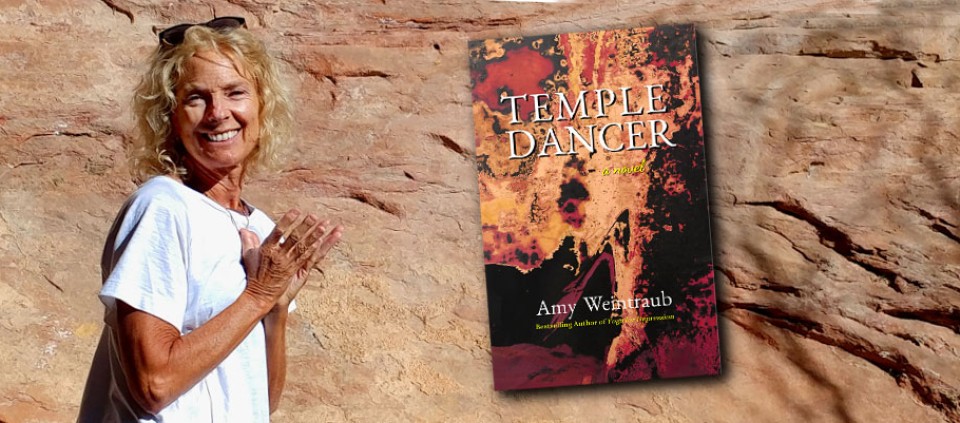My Journey Back to Fiction, via Kripalu

Before my first visit to Kripalu in 1989, I was a fiction writer suffering from depression. I wrote from a dark place of angst and from my deep curiosity about the “why” questions—the psychological antecedents of why people do what they do, especially when pain is so often the result. Then I visited Kripalu for the first time, and my life changed. With daily practice and psychiatric supervision, I was able to stop taking antidepressants.
Once I began practicing and then teaching Kripalu Yoga in 1991, those “why” questions became less relevant. I devoted myself to the “how” questions of my happiness. How yoga postures, pranayama, mantra chanting, and meditation worked to create and sustain the optimum well-being that my students and I were experiencing. I worked with researchers to study these questions and wrote books about yoga and mental health. But my fiction writing ceased. The characters stopped moving through my dreams and asking to be heard.
I was so busy with those “how” questions—traveling, teaching, training, writing articles and book chapters, and producing CDs and DVDs, that my characters never stood a chance. How could I listen with so much going on in my life? I meditated and still do, but that's a deeper sort of inner silence. During this time (about 12 years), I wondered if I was even capable of writing fiction from a happier place.
Then, four years ago, I sold my LifeForce Yoga Practitioner Training business to Rose Kress, who continues to direct the training at Kripalu. Although I still teach LifeForce Yoga and train people in the realm of yoga and mental health, I have more time for writing, and more importantly, for listening. The source of my fiction is hard to pinpoint, but it's no longer the “why” questions. I am listening to my characters again. The result is my new novel, Temple Dancer, a spiritual enigma that, like a double helix, entwines the lives of two women from disparate times and cultures. Saraswati, a young Indian temple dancer in the early 1940s, and Wendy, an artist turned social worker living in New England in the late 1990s who eventually retreats to an ashram, mirror each other’s shame, loss, and ultimate triumphs in love and the total absorption of the art that is their work. It's a spiritual thriller, a mystery, and a tragic love story that’s steeped in yoga philosophy.
I couldn’t have written Temple Dancer without finding Kripalu Yoga in 1989 and without traveling to Kayavarohan, India, two winters in a row in the early 1990s to study Kripalu Yoga with disciples of Swami Kripalu—all of which primed me to listen deeply and humbly write Saraswati’s story. Here's an excerpt ...
Chapter One
1997
At 7:00 am on the first day of the year, Wendy Rabin boarded a train in Coimbatore, India, traveling east from the lush Nilgiri foothills to Chennai, along an ever-more-arid route toward the Bay of Bengal. She hadn’t purchased her ticket in advance, so after a harrowing bus ride 7000 feet down the ribbon of single-lane highway from Ooty, she arrived at the station to find that only fourth-class seats remained. It would be a long journey, the ladies’ car was full, and she was directed to a car crowded with men pressed together on worn wooden seats. For the first time in her life, she felt gawky and tall as she walked to the only seat left beside a woman, a wedge of bench by a window. The familiar view, she reminded herself, would be no different from this fourth-class window than the one from the luxury coach she had booked last time. She murmured a low apology to the elderly woman in the aisle seat, who appeared to be sleeping, and took her place, stowing her backpack beneath the seat and placing her water bottle and notebook in the small space between them.
The old woman’s dark face was etched around the eyes and the corners of her mouth. There were swaths of white and pink in the teak of her complexion, but the skin on her cheeks and forehead was taut and youthful. Even in this heat, beneath her saffron sari, the woman wore flesh-colored sleeves—a kind of undergarment that covered her neck—and her hands were covered in flesh-colored gloves. It was clear that she had been a beauty. There was a noble radiance in her face. The rest of her small frame seemed as insubstantial as cobwebs. Yet Wendy had distinctly felt the woman’s boney knee as she’d climbed over the curve of her to claim the seat. The woman’s only jewelry was a small gold stud in her left nostril. Smeared across her brow was vibhuti ash from a recent purification ritual.
Amy Weintraub, MFA, C-IAYT, YACEP, author of Yoga for Depression and the founder of LifeForce Yoga, is an acclaimed yoga therapist and a pioneer in the field of yoga and mental health.
Full Bio and Programs